This article is based on observations and field research carried out in North Sikkim over 25 years ago between the years 1993 and 1996, while I was a Ph.D. student of social anthropology. It should thus already be considered ‘historical’ and doesn’t aim at describing the current relations between lamas and shamans, and people’s relations with the monasteries, all of which have greatly evolved in two and half decades. This article heavily relies on my PhD which was published as "Lamas, Shamans and Ancestors: Village Religion in Sikkim"(Brill,2008). This article is a simplified summary of some arguments presented in my original book.
Introduction
Although Sikkim is known for its many monasteries, much to the visitors’ annoyance, these repositories of Buddhist knowledge and practice are often found locked up when they venture up the hill to visit them. Indeed, most monasteries located off the beaten track in Sikkim remain closed and only open when village lamas gather there to hold rituals on specific days of the Buddhist calendar. Bhutia and Lepcha lamas in Sikkim are not required to lead celibate lives at the monastery, but instead, are usually found in their village homes, busy cultivating their fields and looking after their families. Lamas are well integrated and highly respected members of the community who partake in all village activities. This shared communality can be surprising for visitors who expect Buddhist lamas to lead secluded celibate lives similar to that of their historical counterparts in Tibet, far removed from the mundane existence of village life.
I was equally surprised about the Sikkimese lamas’ social integration, when nearly three decades ago, I spent a couple of years in the Sikkimese Bhutia village of Tingchim (North Sikkim), carrying out ethnographic fieldwork and researching, among other things, the working relation between Buddhist lamas and shamans.
Buddhist lamas and shamans seemed to amiably co-exist in rural Sikkim, each invoking their own pantheon for the villagers’ common good.
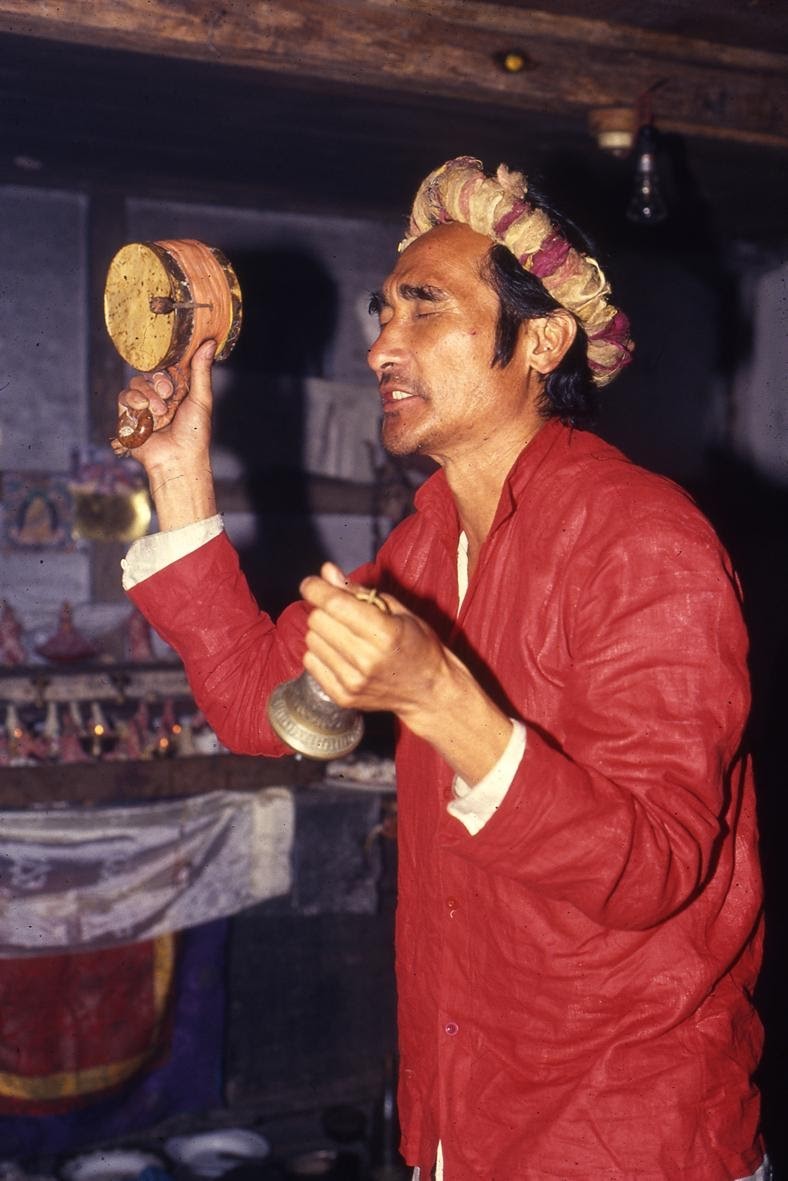
What surprised me even more were not the locked up monasteries but to witness a thriving domestic ritual culture where lamas and occasionally shamans performed rituals in private chapels where they honoured Buddhist deities, warded off malevolent forces, invoked a retinue of protectors and ancestral gods, presided over weddings and funerals and celebrated a common sacred land headed by Khangchendzönga, Sikkim’s supreme mountain deity.
Buddhist lamas and shamans seemed to amiably co-exist in rural Sikkim, each invoking their own pantheon for the villagers’ common good. This peaceful co-existence of two seemingly contradictory religious practices at first appeared very odd to me, just as it must have to Geoffrey Gorer who carried out research in a neighbouring Lepcha village in the late 1930s. Gorer was surprised to notice that the Lepchas of Lingthem “practice simultaneously, and without any feeling of theoretical discomfort, two . . . mutually contradictory religions”.
This multi-faceted domestic ritual culture revealed itself a common feature of Bhutia and Lepcha communities throughout Sikkim and I soon realised that following the abolishment of the Buddhist Kingdom of Sikkim in 1975, the household rather than the monastery, emerged as the main avenue for social interaction and the maintenance of the ties of the Buddhist community and its identity.
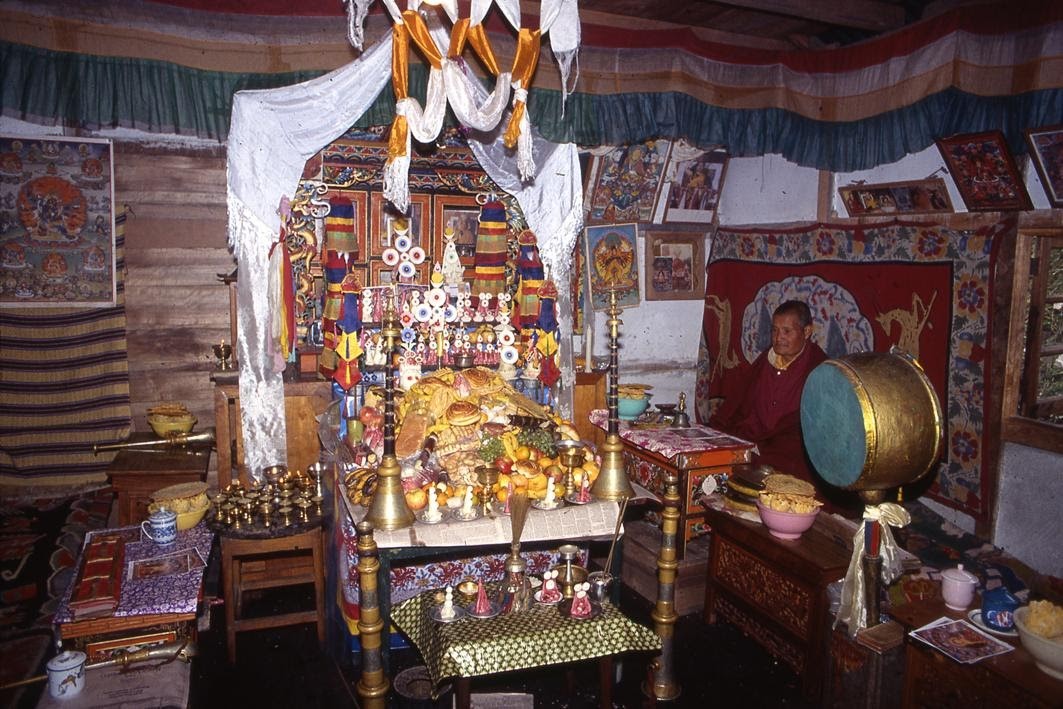
The ritual specialists
The ancestors of Tingchim villagers settled in north-eastern Sikkim in the early 1600s. Most had come from the neighbouring valleys of Haa and Chumbi before or around the time of the establishments of the Kingdom of Sikkim and the unification of Bhutan in the 17th century. There are indications that the inhabitants of these three neighbouring valleys, now belonging to three different countries—Chumbi to China, Haa to Bhutan, and Sikkim to India—all spoke a similar southern Tibetan dialect, were linked by trade routes and were united around the worship of the mountain deity Masang Kyungdu (known as Ap Chundu in Bhutan) and other lineage protectors until they were divided by more recent political developments and the creation of international boundaries and nation-states as we know them today.
When they settled here over three centuries ago, the ancestors of Tingchim villagers did so among the Lepchas with whom they first established economic and eventually ritual and even kinship ties. Much later in the 20th century, the neighbouring Limbus of Mangshila also settled in the area and Tingchim villagers soon developed similar relations with them. The peaceful neighbouring co-existence of three distinct ethnic communities eventually led to much ritual influences and exchanges between their respective ritual specialists.
At the time of my initial field research in the mid-1990s, rituals were performed by three types of ritual specialists in Tingchim: (1) the non-celibate village lamas, both Kagyud and Nyingma; (2) the pawo and the nejum, the male and female shamans of the Bhutias; and (3) the bongthing, a specialist who performs the offering rituals for the supernatural beings of the locality. The pawo and the nejum specialise in maintaining good relations with the pho lha, mo lha (father god, mother god), the Bhutias’ ancestors and lineage protectors through possession and offering rituals while the bongthing, who never gets possessed, maintains good relations with the ambiguous supernatural beings who inhabit the local territory.
When they settled here over three centuries ago, the ancestors of Tingchim villagers did so among the Lepchas with whom they first established economic and eventually ritual and even kinship ties. Much later in the 20th century, the neighbouring Limbus of Mangshila also settled in the area and Tingchim villagers soon developed similar relations with them.
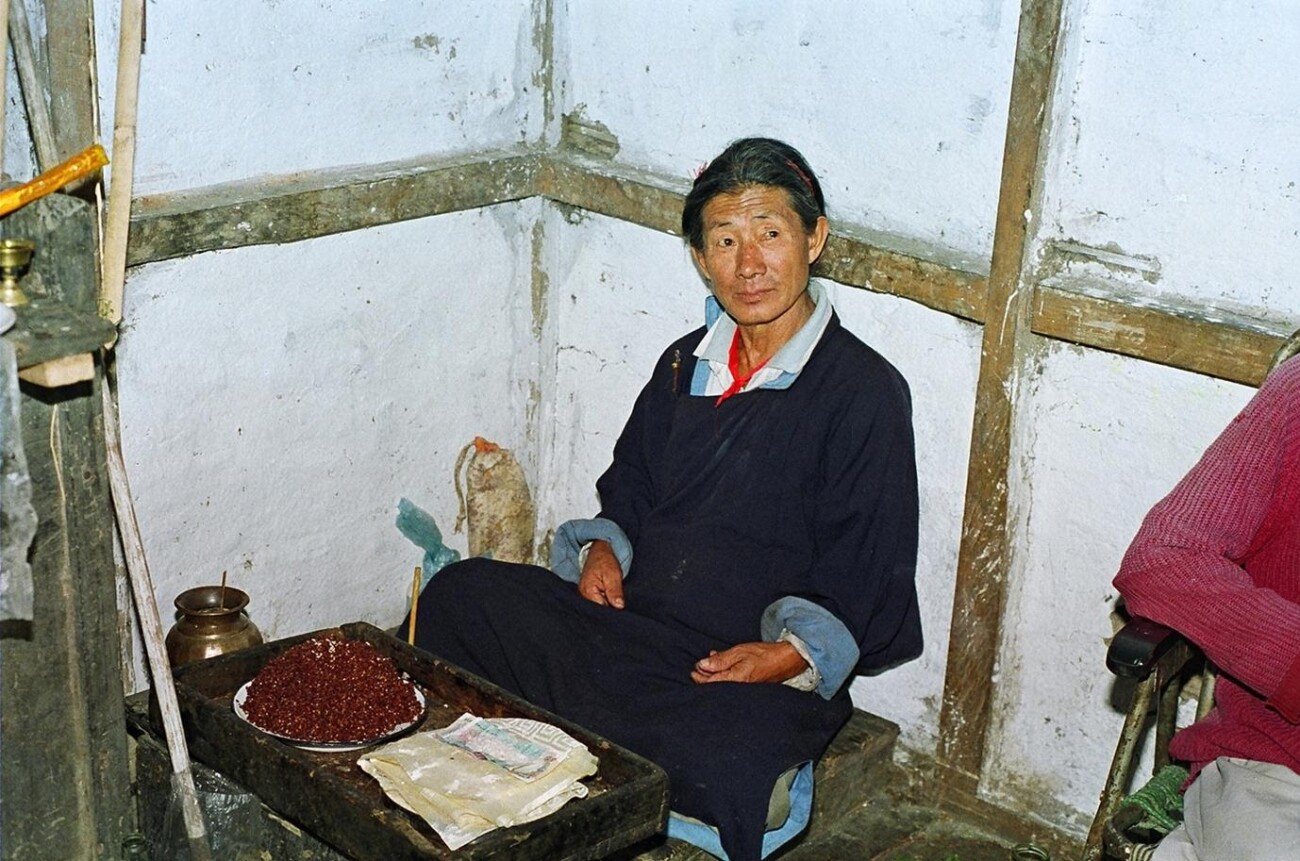
Previously, the bongthing of the Bhutias used to be referred to in Tingchim as bon ban or the ‘the one who can recite the oral texts of bon’—the term bon here referring to some aspect of Tibet’s pre-Buddhist religion. In the course of time, as the bon ban included supernatural beings of Lepcha name and origin in his rituals, and as his rituals were increasingly being held in Lepcha style, the bon ban started being referred to as ‘bongthing’ or ‘bon ban bongthing' by the Bhutias; the term bongthing referring to the male ritual specialist of the Lepcha. However, the Bhutia bongthing’s ritual practice is not to be confused or equated with that of the Lepcha bongthing as significant differences still remain.
Ritual cooperation and overlapping of duties is not uncommon between ritual specialists and a certain ritual fluidity is common everywhere in Sikkim. For example, there used to be a Bhutia acting as a Limbu yebā in Tingchim, and in other regions I have also come across a Limbu acting as a Lepcha bongthing, a Lepcha acting as a Bhutia nejum, a Bhutia performing as a Nepalese jhākri and even a Lepcha lama renouncing his robe for that of the bongthing. It all depends on the identity of their friends, neighbours and teachers and is a clear reflection of the ritual fluidity found among Sikkim’s tribal communities.
The relation between lamas and shamans
In Sikkim, the pawo and nejum perform their rituals side by side with village lamas, usually independently but on some very rare occasions, jointly.
Although lamas and shamans, even twenty-five years ago, rarely performed together, I soon noticed an unusual tolerance for each other’s ritual practices. Shamanic rituals held among other Himalayan Buddhist communities such as the Sherpas and the Ladakhis, usually, either disappeared under the influence of forms of Buddhism that did not support such worldly practices or were absorbed into the hierarchy of the Buddhist monasteries. In contrast to this, the pawo and the nejum, the male and female shamans of the Sikkimese Bhutias, have remained independent of the Buddhist establishment and, for the most part, were neither suppressed nor greatly influenced by the lamas. In Sikkim, the pawo and nejum perform their rituals side by side with village lamas, usually independently but on some very rare occasions, jointly. Considering that shamans, also called spirit-mediums or oracles among other Himalayan or Tibetan Buddhist communities, have been portrayed as rivals of the lamas, in need of being tamed or domesticated, campaigned against by the celibate lamas or at least tested and blessed, the independence of the Sikkimese pawo and nejum, and the tolerance the village lamas have shown them, may seem unusual.
Buddhism, which firmly established itself in Sikkim in the 17th century, initially absorbed the cult of ancestral gods and local deities which eventually became central to the performance of rituals currently held by both lamas and shamans at the village level. I argue that this shared conceptual view of reality, well-rooted in the sacred topography and history of the land, is at the base of their amiable coexistence.
A number of historical, political and economic developments have contributed to the endurance of the shamanic worldview, which now seems to be maintained by the central importance attributed to household rituals as opposed to those held at the Buddhist monastery.
Historical background
Sikkim was an independent Himalayan Buddhist kingdom, founded in the 1640s by Tibetan lamas and ruled by the Namgyal dynasty, a monarchy of Tibetan origin, until its 1975 integration into the Union of India. Tibetan settlers came to Sikkim from the neighbouring valleys of Chumbi and Haa and regions beyond these southern valleys such as Khams Minyak in Eastern Tibet from the 13th century onwards and together with the Tibetan lamas, established the kingdom in the 17th century. Their descendants call themselves Lhopo—‘people from the south’—but are generally known as Bhutia, Sikkimese or even Denjongpas, the people of Denjong or Demojong—‘the fruitful valley’, often mis-translated as the ‘valley of rice’.
Sikkim was founded by three visionary Nyingma lamas known as the Three Patron Saints who established both a new political structure and a new religious order. When the first lama, Lhatsun Chenpo Namkha Jigme (1597–1650) arrived in Yuksum from the north, he met with Kahthog Rigzin Chenpo and Ngadag Sempa Chenpo Phuntshog Rigzin (1591[2]–1656), two great Tibetan lamas who had entered Sikkim respectively from the western and southern gates. Together, the three lamas founded the kingdom at Yuksum in West Sikkim and enthroned Phuntshog Namgyal, a descendent of the 13th century Tibetan immigrants from Khams Minyak, as Chogyal or king who rules according to the Dharma, thus entrusting him with both temporal and spiritual powers. Sikkim soon developed close relations with the 5th Dalai Lama’s government at Lhasa.
Lhatsun Chenpo proceeded to convert the indigenous Lepchas to Buddhism, and did so by converting their sacred landscape and including its already sacred features within his Buddhist rendition of Sikkim’s sacred geography. He composed the Nesol—‘offering to powerful sacred places’—ritual text, which is a celebration of Sikkim as a beyul—‘sacred hidden land’—and an offering ritual to Khangchendzönga, Sikkim’s mountain god, and to all the deities of the land. The Nesol is still one of the most important and most often performed rituals in Sikkim, as much in the monasteries as in the villagers’ private houses. From its inception, Sikkim remained a Buddhist kingdom where the people’s shamanic worldview remained unchallenged by the missionary lamas, where the land was sacred, where ancestral gods and the country’s protectors resided within the landscape and its mountain peaks, and where the cause of illness and misfortune was to be found within some imbalances of this relational whole. The Tibetan ancestors of the Sikkimese Bhutias, not only brought their own shamanic practices but lived side by side and even intermarried with the Lepchas who, despite their gradual conversion to Buddhism, never abandoned their shamanic convictions.
Sikkim never became a strongly centralised state capable of keeping threats to the Chogyal’s temporal and spiritual authority under control. Throughout most of its history (save for three of its twelve kings) the monarchy was weak, often unable to defend Sikkim’s borders or keep its landed nobility under control.
The persistence of the shamanic worldview in Sikkim however, is not only due to the tolerance and inherent shamanic nature of Nyingma Buddhism or the Tibetan ancestors’ close association with the Lepchas. Sikkim never became a strongly centralised state capable of keeping threats to the Chogyal’s temporal and spiritual authority under control. Throughout most of its history (save for three of its twelve kings) the monarchy was weak, often unable to defend Sikkim’s borders or keep its landed nobility under control. Sikkimese lamas were married farmers and the most respected and still remembered religious specialists were not reincarnated lamas at the head of powerful celibate monasteries but gomchens, realised tantric practitioners who lived in mountain caves and who were better known for their magical powers, non-conformity and irreverence towards any form of worldly authority. And until the end of the Buddhist monarchy in 1975, the most important state ritual was Pang Lhabsol—‘offering to the deities of the higher elevations’—the national celebration of Khangchendzönga, which was not only celebrated by lamas but, although discreetly, by Lepcha shamans. Pang Lhabsol was, to some extent, a national shamanic ritual in the sense that it celebrated and renewed people’s relations with the sacred land, its history and deities.
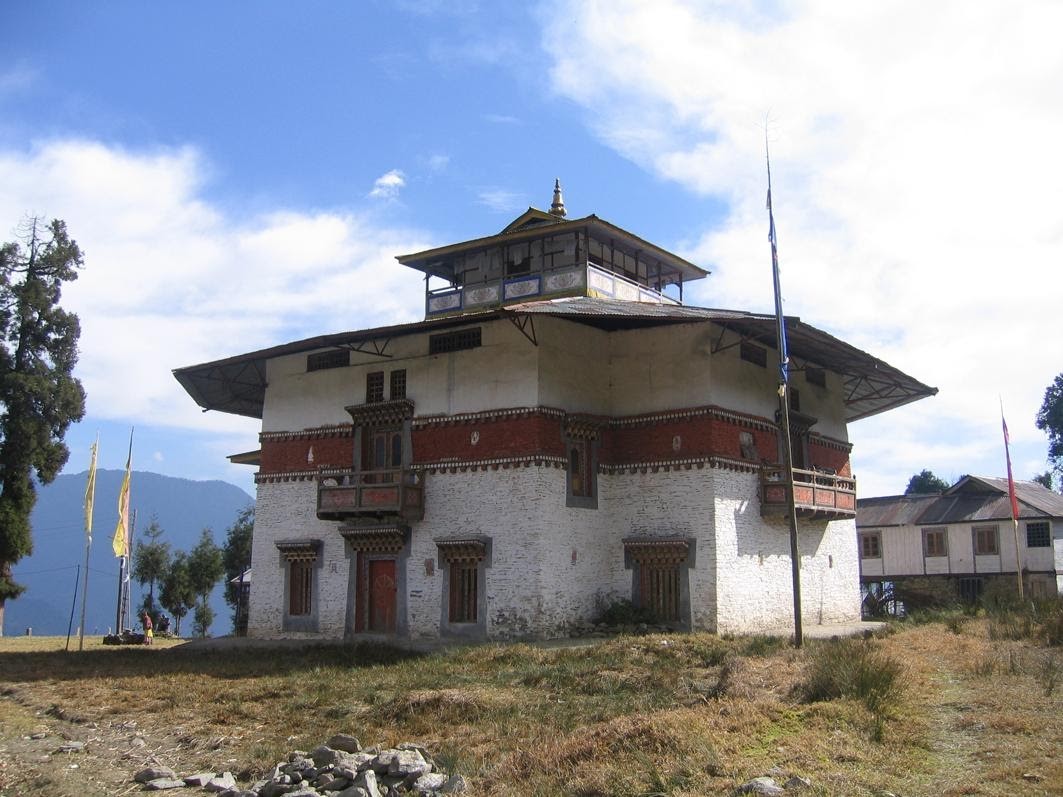
As previously mentioned, Buddhism firmly took root in Sikkim following the establishment of the Buddhist monarchy in the 1640s and the efforts of Sikkim’s Patron Saints and subsequent lamas and Chogyals—particularly that of the third king Chagdor Namgyal—to convert the indigenous Lepchas and build the first monasteries. Powerful Buddhist institutions such as the large celibate monasteries of Central Tibet, which would have contributed to a rapid spread of Buddhism and suppression of shamanism, never developed in Sikkim for a number of demographic, political and economic reasons.
The development of Buddhism at the level of Tingchim village
The Phodong monastery, the first to be built in the North District, was established as late as 1740, nearly a whole century after the foundation of Sikkim as a Buddhist kingdom. Until the 1930s, no men from Tingchim were lamas in Phodong, and the monastery, located some fifteen kilometres south of the village, was visited only once a year by Tingchim villagers on the occasion of the annual ritual masked dances held before Losung, the Sikkimese farmer’s New Year. In those days, Buddhism was primarily confined to the monasteries, their surrounding villages, the capital and the Palace. Although villagers considered themselves Buddhist, there were no lamas in Tingchim at the end of the 19th century. For all rituals performed for the benefit of the individual, the household, the lineage and the village, people relied on different types of shamans who were numerous and powerful. The late spread of institutional Buddhism in remote areas of Sikkim such as Tingchim, with the consequence of the preservation of shamanism, had other historical reasons.
As previously mentioned, Buddhism firmly took root in Sikkim following the establishment of the Buddhist monarchy in the 1640s and the efforts of Sikkim’s Patron Saints and subsequent lamas and Chogyals—particularly that of the third king Chagdor Namgyal—to convert the indigenous Lepchas and build the first monasteries. Powerful Buddhist institutions such as the large celibate monasteries of Central Tibet, which would have contributed to a rapid spread of Buddhism and suppression of shamanism, never developed in Sikkim for a number of demographic, political and economic reasons. According to the 1891 census, Sikkim’s Bhutia and Lepcha population was just over 10,000 and the lamas numbered less than one thousand. The Phodong monastery registered one hundred lamas in 1891 from the surrounding villages who gathered there only on special occasions. There were no towns and this small Sikkimese population was dispersed throughout jungles and forests. There were no centres for higher Buddhist studies within Sikkim and only a few could afford to travel to the Tibetan Nyingma and Kagyud head monasteries of Mindroling, Dorje Drak and Tsurphu in Central Tibet for the study of Tibetan grammar and Buddhist philosophy. Most Sikkimese practiced shifting cultivation and rare were those who had any surplus food or free time allowing them to travel for the purpose of study or pilgrimage. The chronic shortage of agricultural labour among the Bhutias prior to the settlement of Nepalese tenant-farmers must have made it even more difficult to spare the labour of one brother and support him as a full-time celibate lama in the monastery.
The fact that Sikkimese lamas had to look after their fields and families also contributed to their failure to maintain a strong position in the politics of Sikkim comparable to that of the monasteries of Central Tibet. And perhaps for the same reason, the system of tulku, or spiritual reincarnation, never took root in Sikkim until recently.
Most knowledgeable lamas, monastery abbots and realised gomchens had sons, and knowledge, spiritual power and property was passed on to them rather than onto a tulku chosen by the monastery. Instead, Sikkim’s indigenous masters were abbots or dorje lopens who had climbed the ranks of their local monastery’s hierarchy through study and seniority as well as elusive gomchens who spent their lives in the forests from where they were said to perform miracles and reach high levels of self-realisation. Sikkim was renowned throughout the Tibetan Buddhist world as a sacred hidden land blessed by Guru Rinpoche where results in meditation were easily obtained.
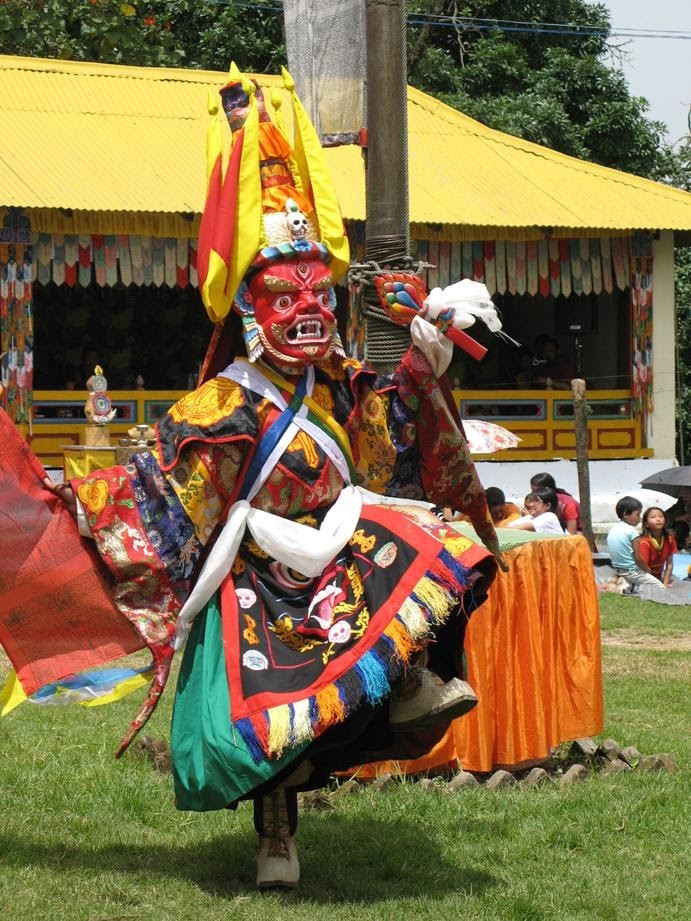
An important development, which had significant consequences for the development of Buddhism all over Sikkim, was the arrival of Tibetan rinpoches and highly knowledgeable lamas from Tibet who settled in Sikkim as refugees from the late 1950s. The most prominent rinpoches who made contributions to Sikkim’s Buddhist development are Dudjom Rinpoche, Dodrupchen Rinpoche, and the 16th Karmapa who established the international headquarters of the Karma Kagyud school at the Dharma Chakra Centre at Rumtek. The 16th Karmapa had a profound influence over the minority Kagyud villages of Sikkim such as Tingchim just as Dudjom Rinpoche did over the Sikkimese Nyingma villages around the same period.
From the villagers’ point of view, until the 1960s, high Buddhism and its rinpoches lay outside and beyond the reach of the village. Buddhism was both incredibly precious and somewhat intangible—it had little to do with village daily life. This changed in the 1960s following the arrival of the Tibetan high lamas and when around the same time, Tingchim villagers expanded their cardamom cash-crop fields and hired Limbu workers. A surplus of time and money was created, which could be invested in the practice and study of Buddhism and the secular education of children. Buddhist household and monastic rituals were increasingly being celebrated in grander style.
Further changes and upheavals took place following the end of the Buddhist monarchy and Sikkim’s integration within the Union of India in 1975. With the end of state-sponsored community Buddhist rituals, Buddhism and the monastery were no longer the base of the village’s relations with the outside world through the Phodong monastery and the Palace’s Administration. These changes resulted in a marked reduction in attendance and contribution to the annual Buddhist community rituals in post-1975 Sikkim, and a strengthening of the domestic ritual as the locus of community life.
Importance and extent of Sikkim’s Buddhist domestic ritual culture
Today, domestic rituals find their best expression in the various ‘rites of passage’. In Tingchim, rituals or social gatherings that mark an individual’s transition from one social state into another are those held after birth, at the different stages of marriage, when a family moves into a new house and establishes an independent corporate household, when a boy joins the monastery, when someone enters a state of severe or chronic illness, and at death. All these occasions are attended by at least one and sometimes two members from each corporate household and various amounts of money and contributions in kind are offered in the name of each household in order to assist those holding the rituals. The amount of money and the name of the donor are inscribed in a register. Whenever the householder has to reciprocate the donation, he will first consult his register and offer a slightly higher donation than he had previously received from that household on a similar occasion.
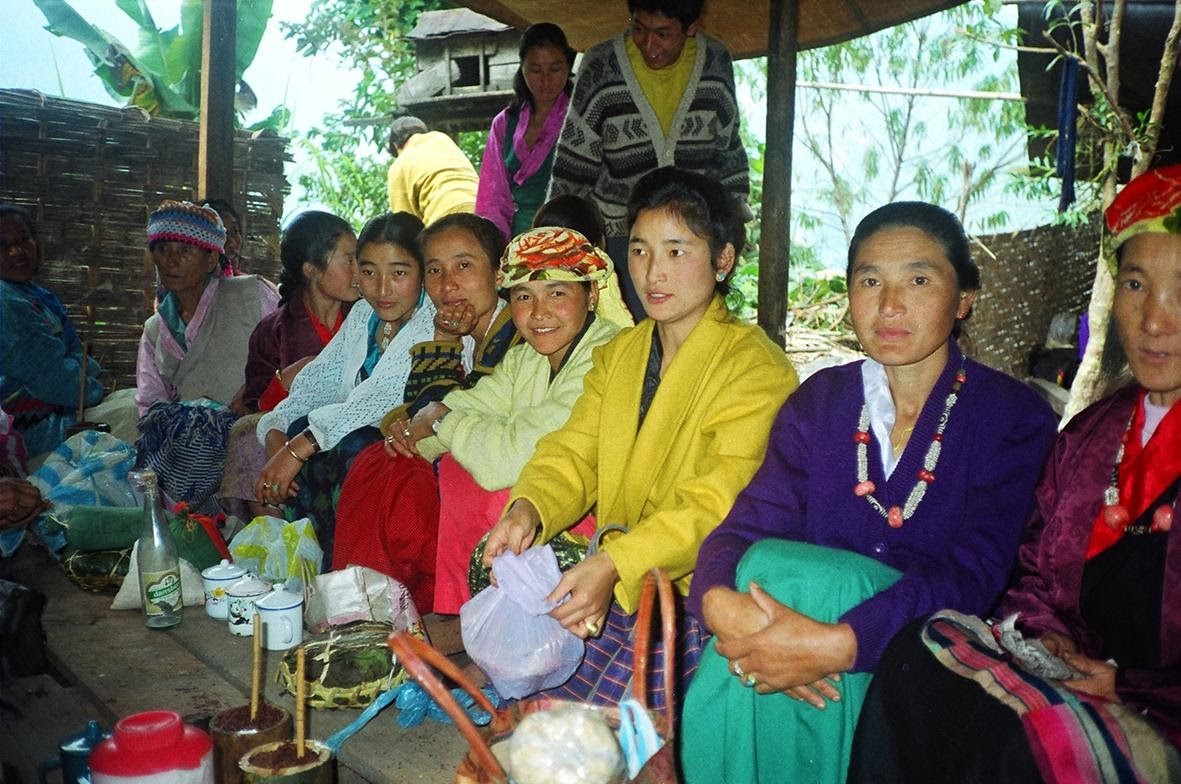
While attendance at community Buddhist rituals held at the village’s prayer hall, the nearby Phodong monastery or even the Tsuglakhang Palace chapel at Gangtok have gradually diminished or altogether disappeared since the end of the Buddhist monarchy, attendance at household rituals held for rites of passage, particularly weddings and funerals, has been well maintained. There is a strong sense of obligation and solidarity that finds expression in these gatherings and the financial contributions that are offered on these occasions. Through the use of the registers, these rituals bind all the village’s corporate households into a strong network of mutual help. Participation in the system is mandatory and defines a corporate household’s membership in the village community.
Although these frequent obligations are often viewed as a burden on a family’s financial resources, the solidarity and equality among households they generate is highly valued and all are very much aware that one day or the other, it will be their household’s turn to be the beneficiaries. This sense of social obligation is so strong that the tradition has been well maintained in the state capital of Gangtok where it has gained a new dimension following its adaptation to the larger social networks of the urban setting.
Curing rituals, sacred landscape and national unity
These rituals in turn best illustrate to what extent the ancestral gods and the local deities are thought to link people’s actions to the land, the body, the household, the lineage, the village and the state.
Sikkimese villagers’ worldview revealed itself best during the performance of curing rituals where the working relations of village lamas and shamans could be witnessed. Not only do these moments of crisis reveal villagers’ ritual preferences, the necessity to save people’s lives provides the ritual specialists with the license to join hands and perform rituals that would, under normal circumstances, be considered unacceptable by orthodox Buddhist lamas. These rituals in turn best illustrate to what extent the ancestral gods and the local deities are thought to link people’s actions to the land, the body, the household, the lineage, the village and the state.
Although the village lamas, the pawo/nejum and the bongthing each have their own particular altar and annual calendrical rituals, the meeting ground for all remains the curing of illness, which is done by taking control of the supernatural beings who inhabit the landscape and who, more often than not, have been diagnosed through divination as being the cause of someone’s suffering. Unlike the Buddhist deities and the pho lha mo lha, these local supernatural beings are considered wild or only partly tamed and for this reason are considered ambiguous. On the one hand, they may have beneficial supernatural powers for which they are propitiated, but on the other hand, they may also be easily provoked and bring illness and misfortune to villagers.
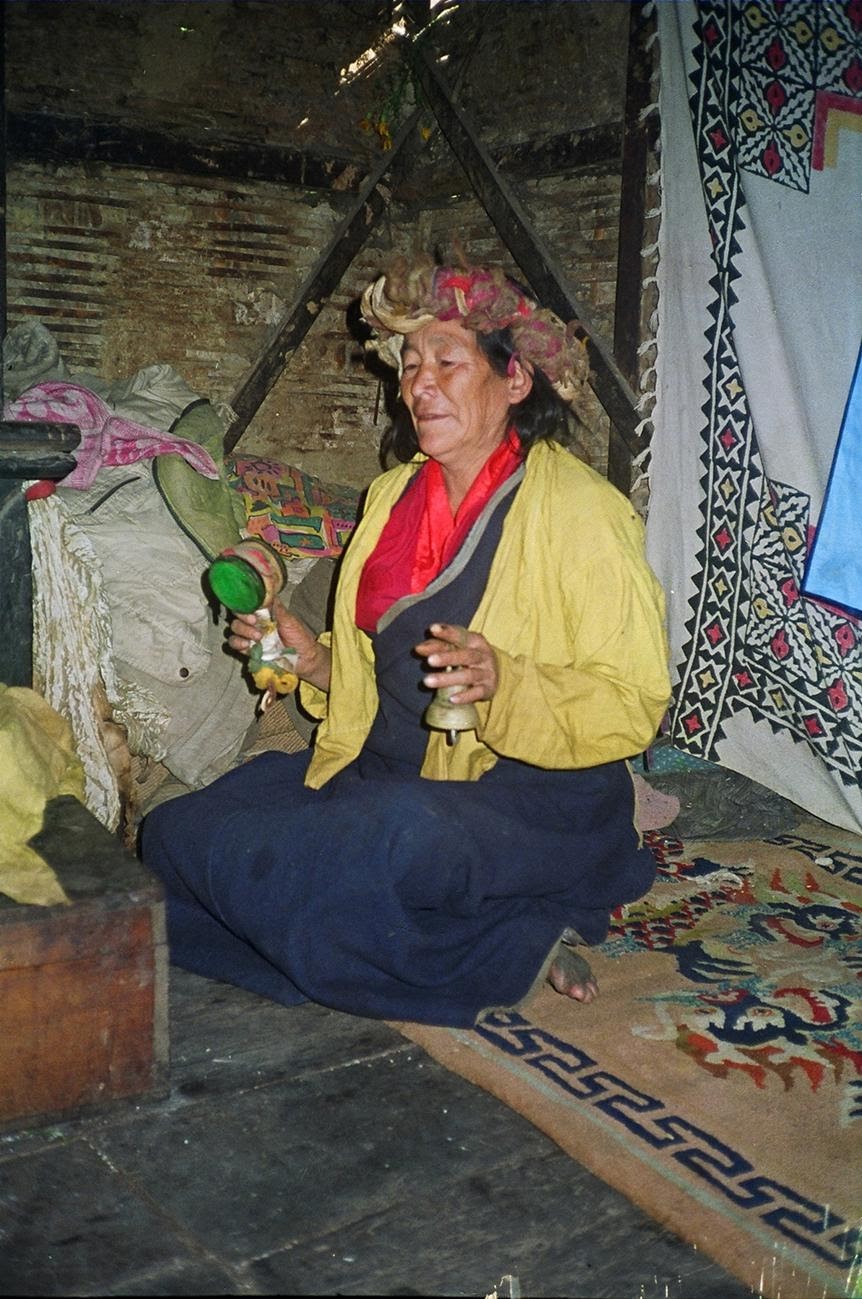
In the village, they are referred to by the general term nöpa, those inclined to cause obstructions, damage or trouble. Taking control of these forces is the main object of everyone’s ritual practice and in villagers’ eyes, the measuring stick of their ritual powers. To accomplish this, the pawo, the nejum and the bongthing will draw their ritual powers and protection from the pho lha mo lha, while the village lamas will draw theirs from the supra-worldly deities of Tibetan Buddhism. Lamas, pawo/nejum and bongthing invoke their respective pantheon and methods with the hope of pacifying the wrath of these beings during curing rituals.
For Tingchim villagers, the idea of relationalism is all pervasive. Not only do the illness-provoking nöpa are thought to inhabit features of the local territory, in a similar way, people’s bodies and patrilineages are related to the landscape through their pho lha mo lha, the ancestral gods thought to reside in the high mountains and, in some cases, simultaneously in specific locations of their own bodies. Illness and other calamities are often thought to be caused by having violated or disregarded these relations, actions or omissions which then require to be mended by seeking forgiveness and presenting appeasing ritual offerings.
At the head of this populous local pantheon thrones the mountain god Khangchendzönga. It is said that during the ‘old days’, at the time of the national ritual of the land of Pang Lhabsol celebrated at the Tsuglakhang Palace chapel at Gangtok, the mountain god was invoked and worshipped as the Kingdom’s protector and ‘god of riches’ by everyone, regardless of ethnicity, who considered himself first and foremost a Sikkimese. In this way, the Sikkimese people, their lineages, the villages, the sacred landscape and the state were together skilfully united under the patronage of Buddhism and the king.
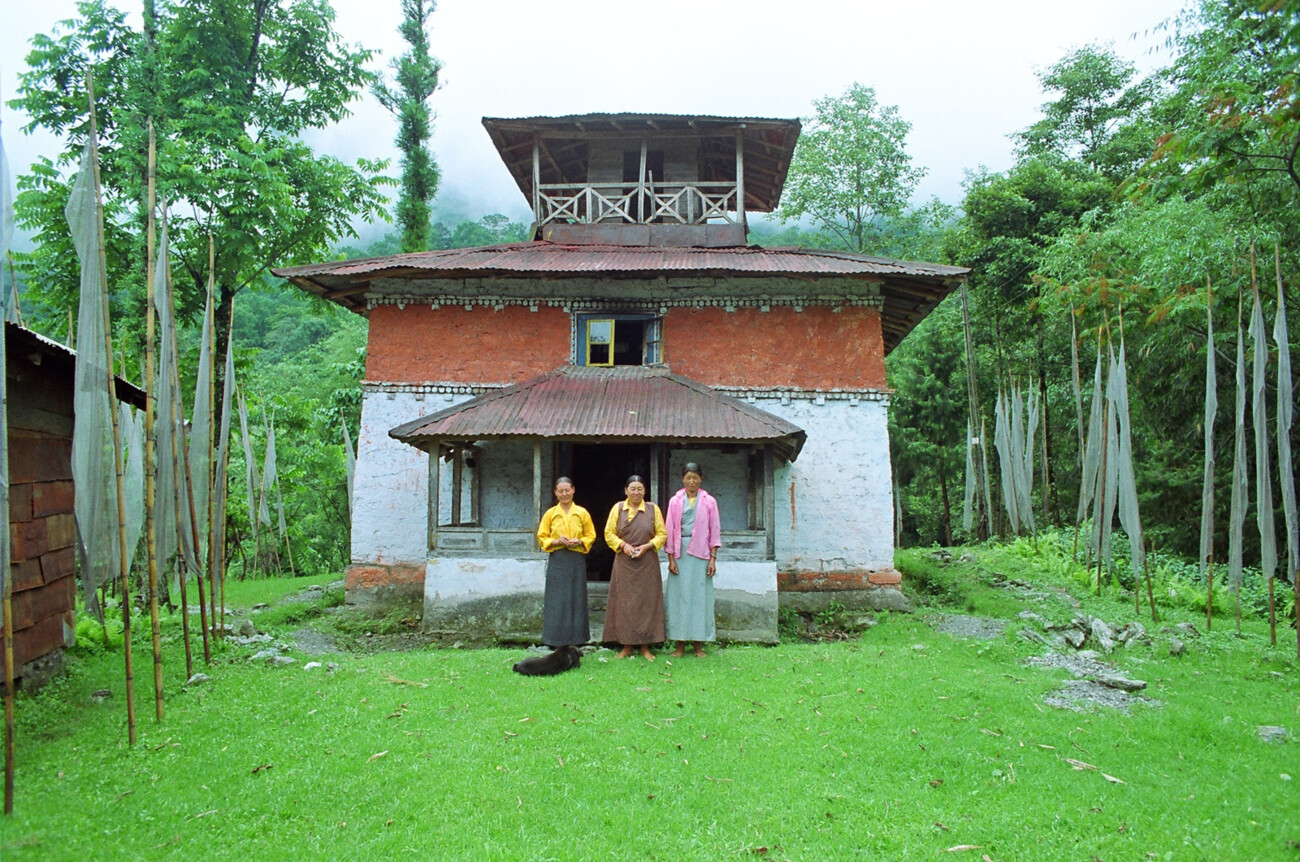
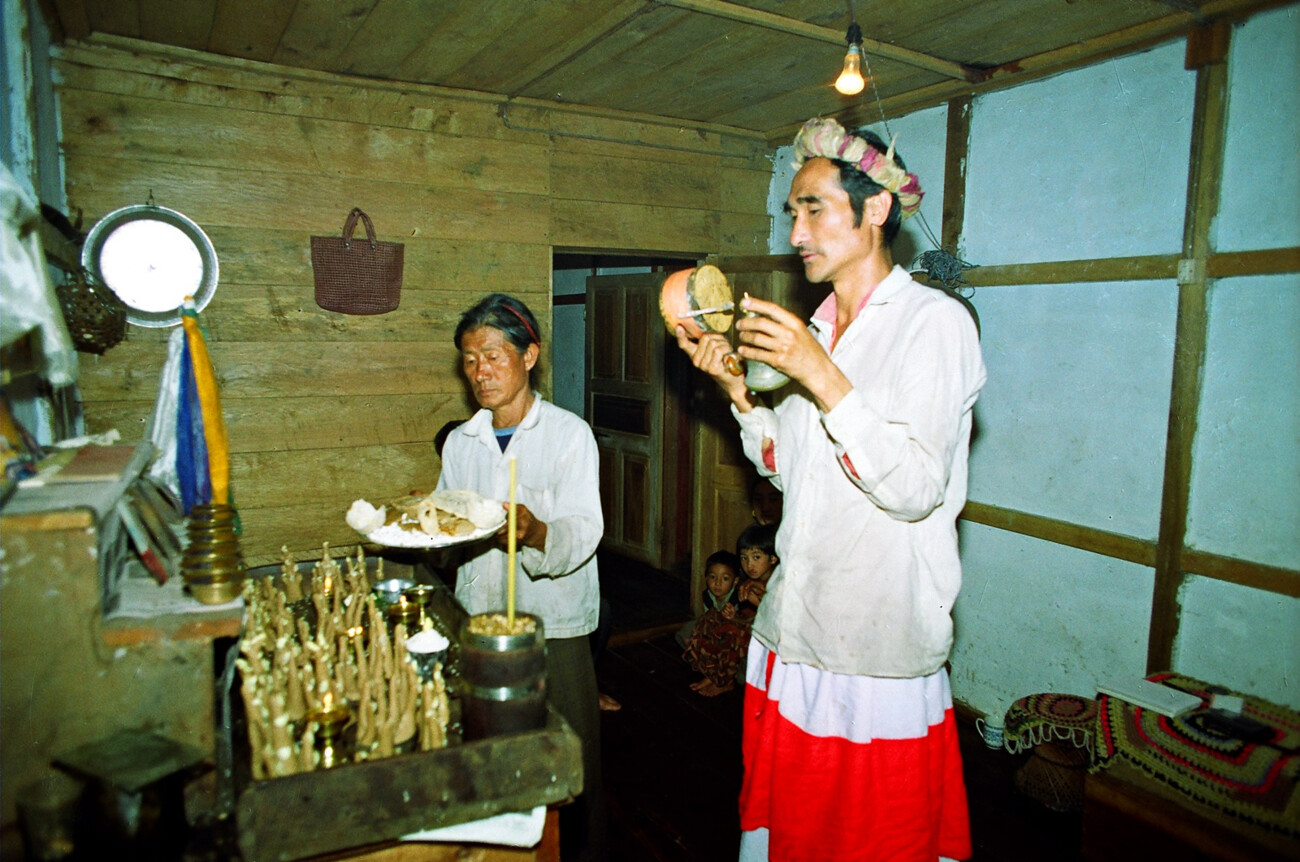
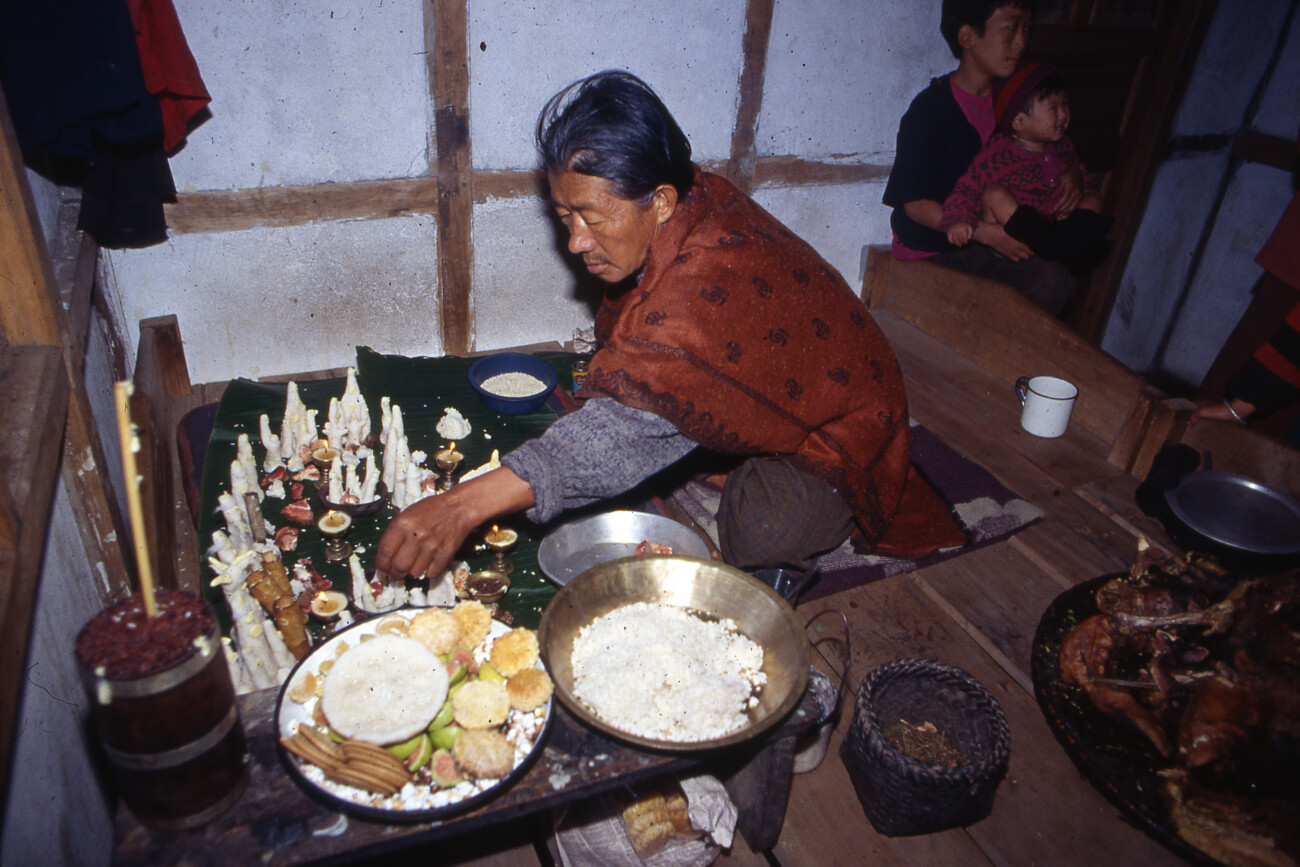
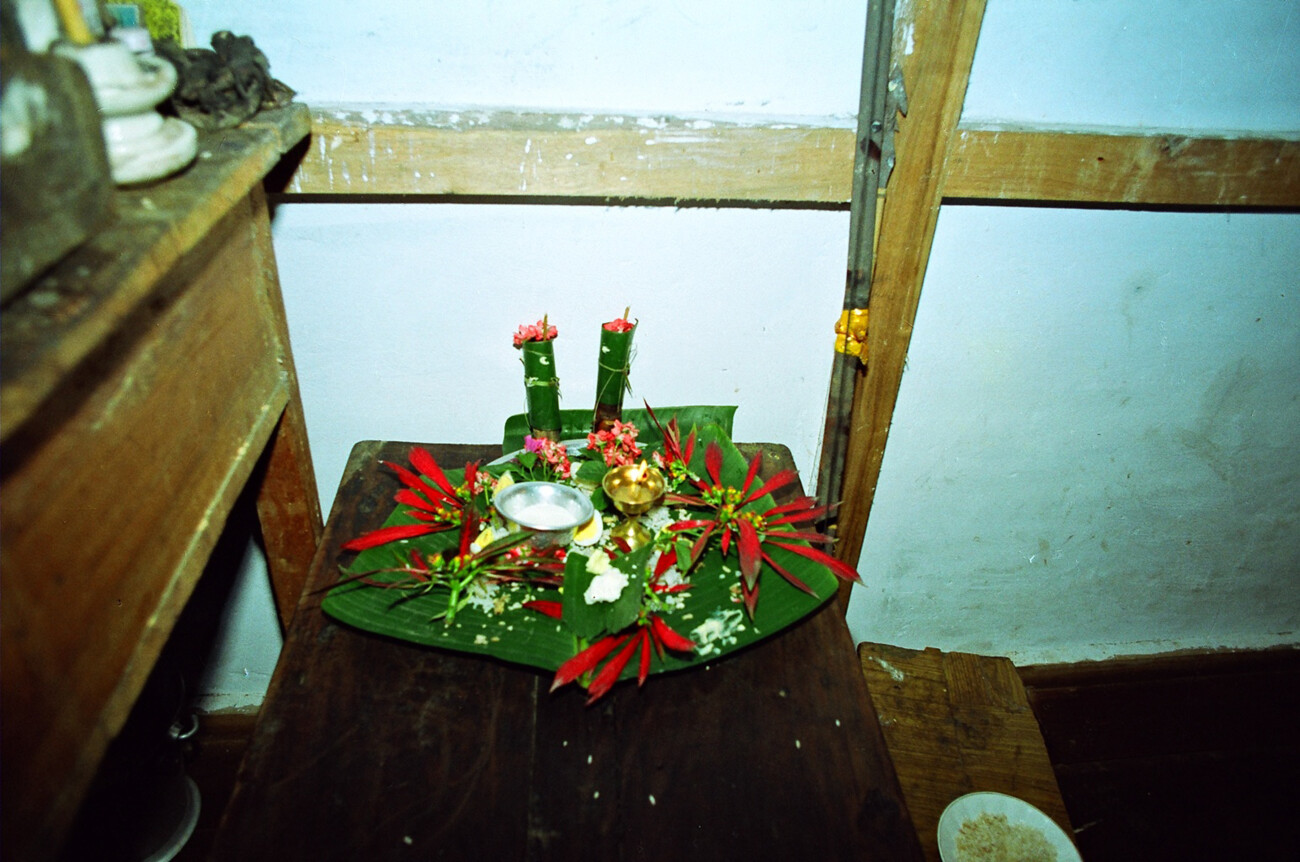
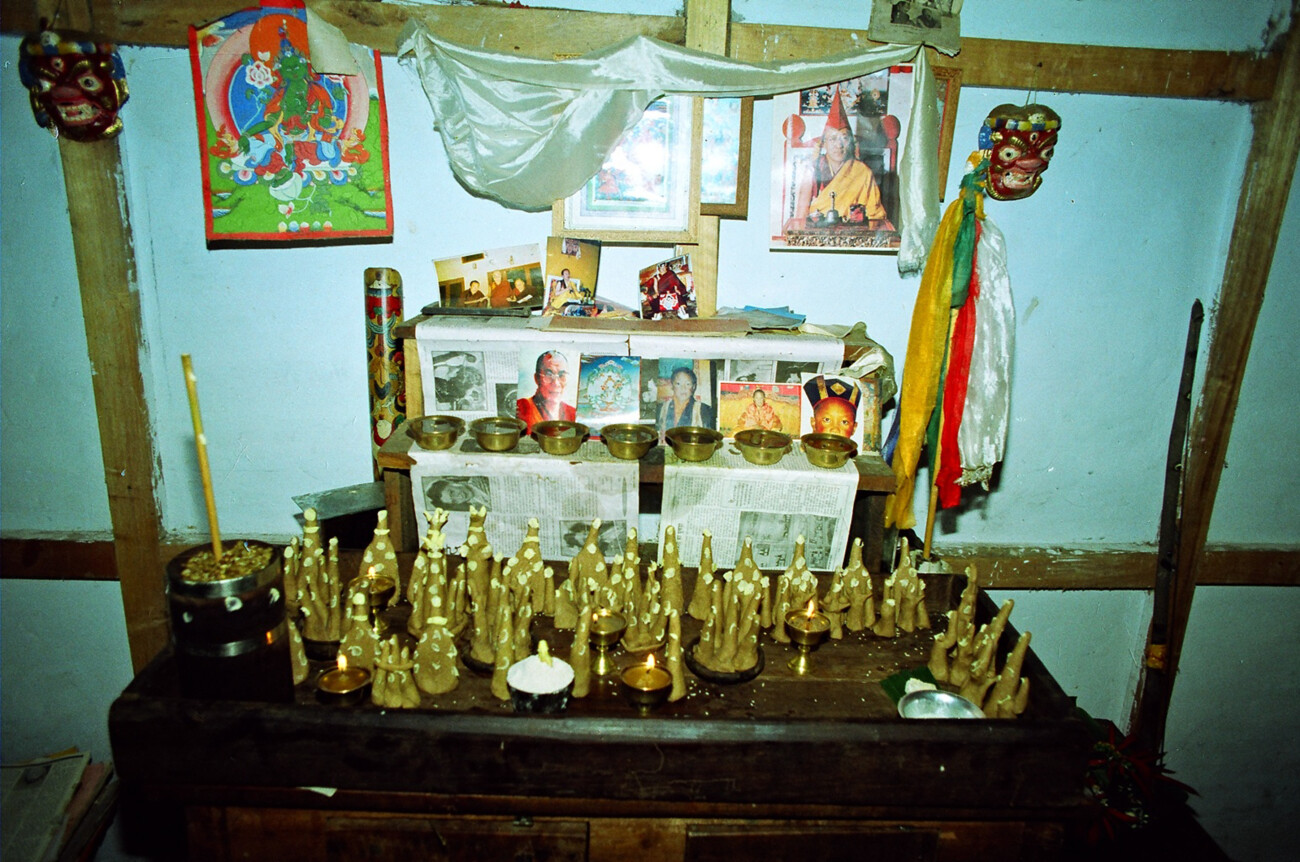
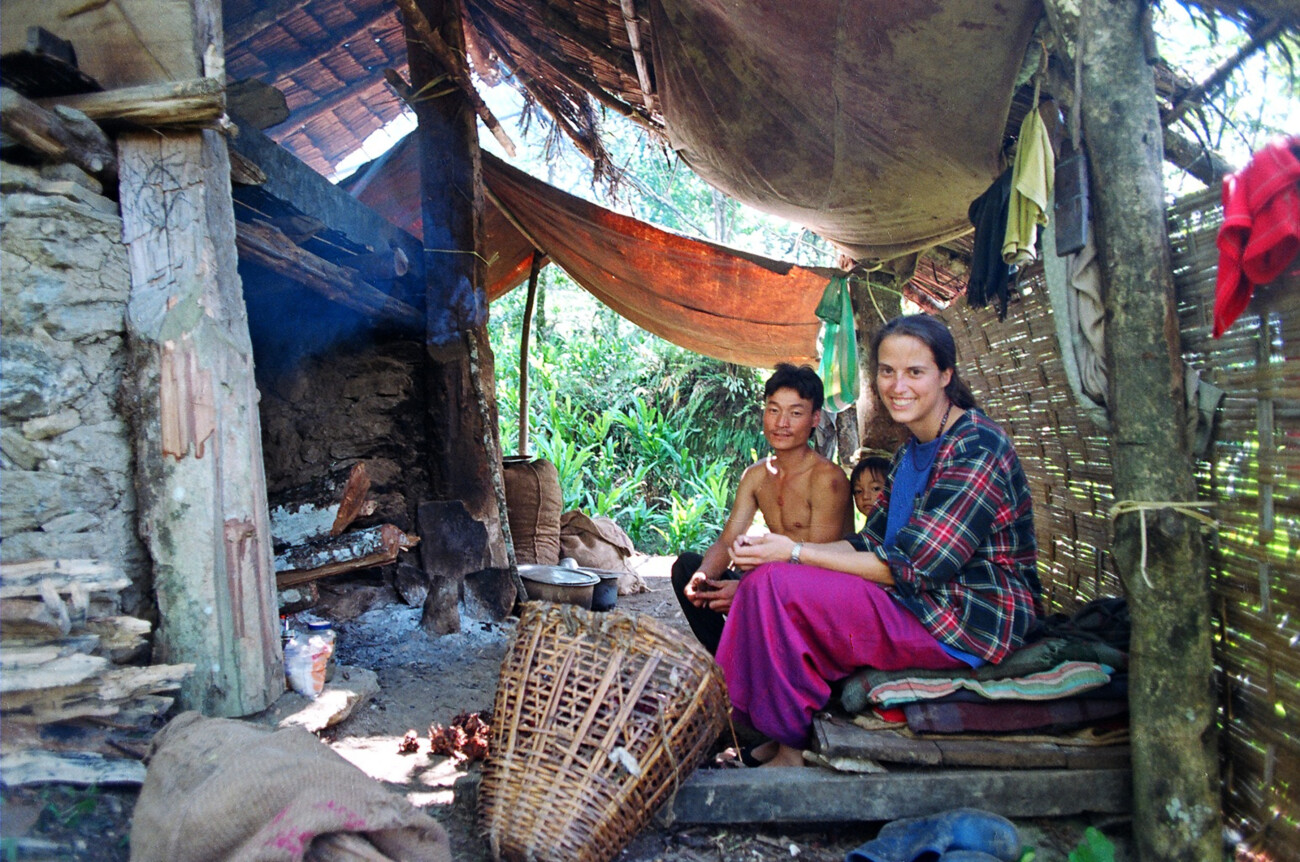
- Reprinted with permission from MARG, Mumbai (Sikkim: The Reinvention of Identities and Cultures edited by Prava Rai) MARG Vol.65 No:4 2014
Anna Balikci-Denjongpa, Ph.D. Social Anthropology (SOAS, London), is Research Coordinator (Sikkim Studies), Namgyal Institute of Tibetology (NIT), Gangtok, and Editor of the Bulletin of Tibetology. Her research focuses on Sikkim’s indigenous cultures and history, including the mediums of ethnographic film and Sikkim historic photographs. She authored Lamas, Shamans and Ancestors: Village Religion in Sikkim (Brill, 2008), co-edited The Sikkim Papers (NIT, 2010) and The Royal History of Sikkim: A Chronicle of the House of Namgyal (Serindia, 2021). Her team at the NIT produced 10 ethnographic films on Sikkim’s Bhutia-Lepcha ritual culture that can be freely viewed here: http://tibetology.net/?page_id=349 The Bulletin of Tibetology, which features academic articles on Buddhism, and more recently on Sikkim’s culture and history, can be freely downloaded here: http://tibetology.net/?publication-post=bulletin-of-tibetology


It's well written, I am from sikkim and i was glued while reading,so detailed. Loved it. Few things i learned for sure.
An insightful article which highlights the world of the Lamas and Shamans, and their interconnections with the wider society.
Another unique and fascinating article...and the same adjectives can be applied to the Sikkim Project itself...and indeed, to Sikkim.
Very good article and very much in line what I experienced in a village in West Bhutan in 1990 where I did research.
After reading the entire articel my observation is that it is well documented, however the entire details pertain to one particular village that is Tingchim. The article depicts of Lamas and the Shamans sharing common contexts and as to how the same happened. Having done shamanic workshops and Buddhist workshops in Sikkim for three consecutive years and the research which o personally have done on the two topics I found out that the pawo and the nejum are shamans but the both are related to Bon Buddhism and the same can be found across Sikkim with most of the Buddhist families of Sikkim as each and every family do have a phola and mohla and this is entirely against the Nyingmapa and the Kagyudpa sect of Tibetan Buddhis. Every Sikkimey Buddhist in Sikkim follow these two sects of Buddhism (Lepchas,Bhots, Gurungs, Tamangs etc) and these two sects are the purified form of Buddhism or a part of modern Buddhism but Bon Buddhism was a shamanic form plus Kanchendzonga is Sikkim's guardian diety and not just a diety for riches. Written well with effort however the entire article misleads and a lot of errors can be found possible the research on the article pertained to just one village.
For more details about the relation between Lamas and pawo/nejum/bongthing in the context of Tingchim village between 1993 and 1996, and indeed with Bon, and the village's relation with the monasteries, please refer to my book "Lamas, Shamans and Ancestors" usually available at Rachna. For the various identities of Khangchendzonga, please refer to my article http://himalaya.socanth.cam.ac.uk/collections/journals/bot/pdf/bot_2002_02_01.pdf
Very lucid.
20 years past but mostly still holds true.